The impressive beauty of black flowers, the unusual appearance of black animals and much more...
This list will shed light on the dark side of nature and perhaps lead you to add black to your favorite colors.
Let's explore!
Black Flowers
Black Bat Orchid
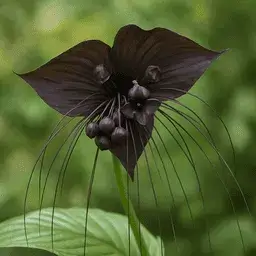
The Black Bat Orchid (Tacca chantrieri) is an exotic and mysterious flower belonging to the yam family. This rare plant blooms in astonishing black and gets its name from its bat-like shape and elongated 'mustache'-like projections.
Native to the tropical regions of Southeast Asia, this interesting flower grows in forests and riverbanks.
It tends to grow in both shady environments and areas with high humidity.
Black Hellebore

"Black Hellbor" (Helleborus niger), which blooms even in winter, is an elegant plant with black roots, which catches the eye with its white flowers, especially during Christmas.
Despite its similarity with roses, it does not belong to the rose family (Rosaceae).
Black Calla Lily
Also known as Arum palaestinum or "Black Lily", this herb is known for its long history and place in traditional medicine of the Middle East. Just like luring a criminal, it spreads its pollen by emitting the smell of rotten fruit to attract flies.
Interestingly, although the leaves of the plant are poisonous, they become edible after removal of the poisons.
Fruits and Vegetables
Blackcurrant

Blackcurrant is a deciduous shrub grown for its delicious fruits. It grows naturally in the moist and fertile soils of Europe and Asia. Rich in vitamin C and polyphenols, this fruit is used to make jams and syrups, and is even included in alcoholic beverages.
Blackberry
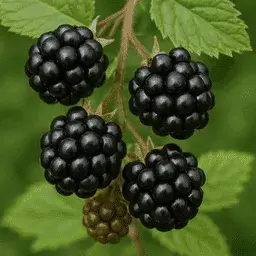
Blackberries are a hardy plant with over 375 species grown for their delicious fruit. It is generally known for its black fruits and numerous spiny shoots. It grows naturally in various regions and is resistant to harsh conditions.
Fig
The fig is a small tree with delicious fruits native to the Mediterranean region. It has been cultivated throughout history and is now widely cultivated throughout the world.
It is known for its many tiny flowers and its durable structure that can adapt to hot climates. It can be consumed fresh or dried and used in various desserts.
Lycium ruthenicum
Lycium ruthenicum, also known as black goji, is a flowering plant in the midnight nightshade family.
It is found in Central Asia, southern Russia, northwest China, northern India, and Pakistan.
This plant grows in heights ranging from 1.8 cm to 180 cm and blooms in June-August. Interestingly, the fruits of this plant, which can sometimes bloom in May, ripen in August-October.
Black Animals
Black toad

The black toad (Anaxyrus exsul) is an interesting toad that lives only in the deep valleys of Inyo County, California.
Its nomenclature means "exile frog", emphasizing the isolated habitat of this species. Its black skin is covered with white and brown spots, and it has a white stripe on its back.
These frogs, which do not go far from the water, prefer to walk rather than jump, and their males are quieter than other species. This endangered species is supported by various projects for the protection of its habitat in the future.
Black-footed ferret
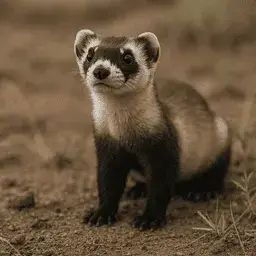
The black-footed weasel (Mustela nigripes) is a rare and endangered mammal species native to North America.
Preferring a nocturnal life, this tiny predator feeds almost entirely on tadpole rodents.
Grammostola pulchra

Grammostola pulchra is a species of black tarantula native to Brazil. It is very popular as a pet with its shiny black body and docile character. This beauty is a slow growing species that can take up to 8 years to mature and can reach up to 18 cm in length.
The longevity of females in particular makes this tarantula a preferred choice as a pet.
Arabian fat-tailed scorpion
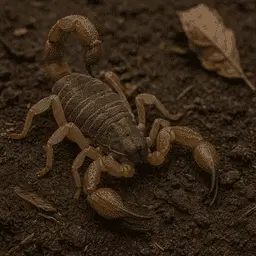
The Arabian fat-tailed scorpion, aka Androctonus crassicauda, is a dangerous species of scorpion found in North Africa and the Middle East.
Growing up to 10 cm, these desert dwellers hunt at night and are notorious for their venomous stings.
Black kite
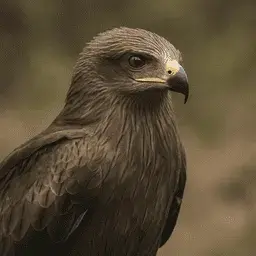
The black kite is a medium-sized bird of prey belonging to the Accipitridae family.
One of the most common raptor species in the world, the black kite is easily recognizable by its forked tail and angled wings.
Black rat

The black rat is a globally distributed long-tailed rodent, also known as the roof, ship, and house rat. It probably originated in the Indian subcontinent.
It creates a big problem for farmers with its general nutritional habits and damage to agricultural products.
Hermetia illucens
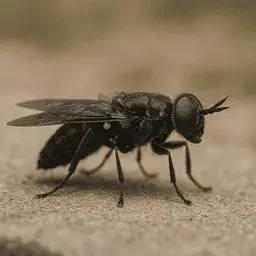
Hermetia illucens is an interesting and useful species of fly known as the black soldier fly. These flies are of great use in recycling organic waste and in the production of animal feed.
Its larvae quickly and effectively reduce waste, prevent bad odors and at the same time restore valuable nutrients to the soil. Moreover, these larvae can be used as an alternative protein source for animal feed and human food.
Black garden ant

The black garden ant is a common and rather interesting ant species found in parts of Europe, North America, South America, Asia and Australia.
These ants live in large colonies ranging from 4,000 to 40,000, and an incredible black garden ant queen can live as long as 29 years. Queens only produce males when mating season approaches, and you can witness thousands of winged female and male ants mating in the sky during this period.
Hadrurus spadix
Hadrurus spadix is a large scorpion species native to the southern deserts of North America. This interesting creature, about 15 cm long, is a predator that expands its habitat by digging in the sand.
Hadrurus spadix, also known as the black back scorpion, differs from the giant desert hairy scorpion by its black head. This scorpion, which can be quite nervous and aggressive, can make very painful stings despite the low toxicity of its venom.
Black panther
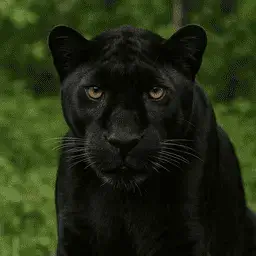
The black panther is a melanistic color variant of the leopard and jaguar. These impressive black beauties appear in tropical forests with their mysterious appearance.
American black bear

The American black bear is a medium-sized bear species native to North America. The smallest and most common bear species on the continent, these cute creatures prefer to live in forested areas.
Common blackbird

The blackbird, a songbird that lives in Europe, Asia and North Africa, is known for its beautiful and melodious songs. Feeding both insects and fruit and berries, this black-feathered bird is common in gardens and forests.
Speckled black salamander

Native to California, the spotted black salamander lives in its natural habitat of woodland and grassland.
This interesting creature, which can climb thanks to its movable tail, feeds on small invertebrates and is threatened by habitat loss.
Tegula funebralis

Tegula funebralis, or black turban snail, is an interesting sea snail that lives on the Pacific coast of North America, and can live between 7 and 30 years. Known to be used as food, this species is what people call a "turban breaker".
Porcelain crab
Porcelain Crab is a small, colorful crustacean species found in the Indo-Pacific region. It is notable for its porcelain-like shell and is often found between the pointed tentacles of jellyfish species.
These crabs live among jellyfish to avoid their poisonous touch. Porcelain crabs don't use heavy weapons like other types of crabs, but their striking colors blend in with the color palette of the seafloor.
These crabs are also popular for the aquarium hobbyist.
Calcinus laevimanus
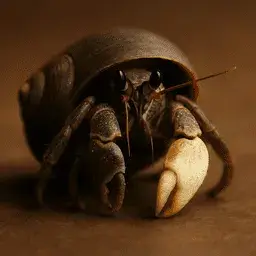
Calcinus laevimanus is also known as the blue-eyed zebra clown crab. A feature of this crab living in the Indo-Pacific region is that the back of its shell is unprotected.
It is a warrior type and struggles to obtain an empty shell or other resources. Females carry their eggs under their bellies and can lay up to three thousand eggs at a time.
Orca

Orca is the largest member of the whale family. As a cosmopolitan species, they are found in the world's oceans, from the polar regions to the tropical seas.
It is known that their social life is intense with their unique hunting techniques and communication styles.
Some local populations have faced depletion of catch resources, loss of habitat and human fishing.
Wild orca are not dangerous to humans, but they have been recorded attacking their trainers in marine parks. Legends are thought to be composed of spirits of people or to be ruthless murderers.
Holothuria forskali
Holothuria forskali is a species of sea cucumber in the family Holothuriidae. It lives in shallow waters in the Mediterranean and East Atlantic.
Its body is cylindrical and can grow up to 30 cm. Its texture is soft but firm and covered by sensing papillae. It prefers to eat other litter while feeding and is usually active at night.
Cotton swabs, known as Cuvierian tubules, can be left out of their bodies to confuse predators.
The black sea cucumber is closely related to seahorses such as water stars and sea urchins and has a water pressure system that acts with the help of hydrostatic pressure.
Black swan
The black swan is a large waterfowl that breeds in the southeast and southwest of Australia.
It is known for its black plumage and red bill. They exhibit a monogamous reproductive behavior and raise their offspring together. In the 1800s, it was brought to various countries as an ornamental bird and escaped to form settled populations.
It is the symbol of the Western Australian and British city of Dawlish. During swimming, it bends its neck in an "S" shape and opens its wings in an aggressive manner. The sounds it makes while singing and flapping its wings are quite impressive.
Black oystercatcher
The black oystercatcher is a striking black bird off the coast of western North America. It ranges from the Aleutian Islands to the coast of the Baja California Peninsula.
This bird, which has a long red beak and pinkish feet, feeds on sea creatures such as crabs, mussels and sea urchins in the sea shallows. Preferring only one area during the spawning period, the bird usually chooses rocky shores and jetty sheltered areas.
With an estimated 8,900-11,000 individuals worldwide, this species is a protected species and is an indicator species especially for the northern Pacific coasts.
Black marlin
Black marlin is a giant fish that lives in tropical and subtropical regions. This fish, which can reach 4.65 meters in length and 750 kilograms in weight, is one of the largest bony fish.
These fish, which have the ability to swim quickly, are known for their predatory and hunting abilities.
They are used both for commercial fishing and are very popular for sport fishing. In the Maldives, in ancient times, these giant fish were able to drag small fishing boats for kilometers.
Black Chiton
Katharina tunicata is a species of chiton from the Mopaliidae family. It draws attention with its soccer ball-shaped black leather belted body and protective plates.
It feeds on seaweeds such as kelps, sea lettuce, and crustacean diatoms. They may also eat sponges, small mussels, worms, and seaweed.
If you want to get close to this interesting creature, you can find it in the intertidal areas on the rocky beaches.
Aplysia vaccaria
Aplysia vaccaria, the California Black Sea Hare, is the largest sea snail in the world. These gigantic creatures, which can grow up to a meter in length, feed only on brown seaweed and kelp, which makes them black in color.
Since they have no natural enemies on them, their defense mechanisms have developed thanks to the toxins in their bodies. Because of their size, many predators cannot hunt or eat them.
They also mate as a "simultaneous hermaphrodite", having both female and male genitalia, like many sea snails.
Black caiman
The black caiman, also known as the black dolphin crocodile, is a species of crocodile native to South America. It is the largest of the Alligatoridae, one of the largest crocodile families, and its adults can grow up to 6 feet tall.
The black caiman, a black and big-eyed crocodile, is a large predator and inhabits slow-flowing rivers, lakes, and wetlands with seasonal flood waters. In general, it can hunt many animals, but juveniles feed on smaller prey.
The black caiman's prey includes fish, birds, reptiles and mammals. This crocodile species can be dangerous, but it is protected and has recently become common again.
Black carpenter ant
The black carpenter ant is one of the largest and most common species of carpenter ant found in the central and eastern parts of North America, particularly the USA and Canada.
Ant colonies consist of thousands of individuals and can travel up to 91 meters in search of food. Interestingly, there are also larger workers who will carry the nectar that the small worker ants specially collect. Black carpenter ants nest in damp wood and damage a structure, compromising its structural integrity.
Latrodectus
Latrodectus is a genus of spiders with a wide distribution. Spiders of this genus are often called "black widow spiders". The venom of these spiders can be dangerous to humans, but is rarely fatal.
The most famous species include the American black widow spiders and the Australian red-backed spiders.
Female spiders are usually dark in color and have a clock-like pattern on the underbelly. Latrodectus spiders weave a special thread that can carry heavy loads with strength equal to its own weight.
Breviceps fuscus
Breviceps fuscus, the black rain frog, is a species of frog native to the southern coast of South Africa. It has a stocky body, short legs and inverted feet.
Unlike other frogs, this species cannot swim or jump, but they can protect themselves by burying themselves deep.
Also, lumps and small tubercles on their bodies can keep them away, making them appear venomous to predators such as snakes and birds. Although this interesting frog species is threatened by habitat loss, its population is generally well preserved due to its habitat in protected areas.
Black ghost knifefish
Black ghost knifefish is a nocturnal species that lives in freshwater habitats of South America. It has an electrical organ and senses objects around it with electrical signals.
Therefore, it can detect objects and prey around it with the tonal sounds it hears. Thanks to the electrical organ it has, it can generate and receive its own electrical signals.
The name "black ghost" was given to the natives of South America because these fish were believed to be inhabited by the ghosts of deceased people. They feed in large aquariums and can reach a maximum length of 18-20 inches.
Arbacia lixula
Arbacia lixula is a round, deep black-looking sea urchin species. It lives on the coasts of the Mediterranean Sea and on the Macaronesian islands (Azores, Madeira, Canary Islands).
It is found in shallow waters, on rocky shores at depths of 0-30 meters. It feeds on crusty red algae and small filamentous algae. High seawater temperatures are thought to favor this species.
Removal of this species from a marine reserve has increased the density of filamentous algae, while population growth has also been seen within the same area.
Tabanus
Tabanus is an insect genus that includes horse flies. Females have scissor-like mouthparts that are used to cut the skin.
Horse flies cut through the skin and lick the blood to suck blood. Some species of this genus are potential carriers of diseases such as anthrax, worms and trypanosomes.
Some species, such as Tabanus bovinus, prefer cattle and are less harmful to humans. The genus includes hundreds of species and many species groups. It is a nuisance for horse riders and animal owners, but it also has many useful functions.
Papilio polyxenes
Papilio polyxenes is a butterfly species also known as the eastern black beetle. It was chosen as the state butterfly of Oklahoma and New Jersey.
The caterpillars of this species, also called the Ottoman beetle, feed on parsley leaves and absorb toxins that are considered unpleasant by birds.
Males and females have different colors and females are larger. Females may compare themselves to another species, B. philenor, for safety.
Black vulture
A cut off part of a venomous snake, a trash can, or the corpse of a roadside animal... None of them will whet people's appetites, but for the Black Vulture it makes for a delicious lunch.
The Black Vulture is a species of bird that spans from Northeast America to the Uruguay and Chilean regions of South America.
With a wingspan of about 1.5 meters, the Black Vulture has very dark feathers, a hairless gray-black head and neck, and a curved beak. These traits have evolved to adapt to the scavenger lifestyles of vultures.
Vultures have hairless heads to easily dig through carrion. They also prefer black feathers to keep their bodies free of blood and other fluids. Besides carrion, these birds may also eat different foods such as eggs, small reptiles, and small animals that die soon after birth.
Black mamba
The Black Mamba is a very venomous snake species living in Africa. This snake, which can reach 4.5 meters in size, is one of the longest snakes in the world. It is a fast and deadly snake, but is often threatened or cornered before attacking humans.
An intelligent and versatile snake, it moves both on the ground and in trees to catch its prey.
The average life expectancy of the Black Mamba is about 11 years. Its venom consists of neurotoxins and usually shows symptoms within ten minutes.
However, it can be fatal if not treated properly. The Black Mamba can come in different colors that can be mixed with other types and is not as attractive as its contents.
Leopard gecko
The leopard gecko, also known as Eublepharis macularius, is a lizard native to the rock-arid grassland and desert regions of Afghanistan, Iran, Pakistan, India, and Nepal.
It differs from other geckos with features such as the absence of eyelids and lamellae.
They are usually active at night and tend to move slowly. In their wild environment, invertebrates are their main food source for hunting, but they can also occasionally prey on small vertebrates. Leopard geckos are popular as pets and are widely kept as pets.
Leopard geckos do not have sticky lamellae on their feet, so they cannot climb flat walls.
Kingsnake
Kingsnakes are non-venomous snakes that come in a variety of colors and sizes. Preying on their own species, these snakes prefer a variety of prey, including other snake species.
Plants
Phyllostachys nigra
Phyllostachys nigra, also known as black bamboo or purple bamboo, is a species of bamboo native to Hunan Province. Their slender curved stems stand out with their rich purple-black colour.
The leaves are pointed and quite large. Bamboo is used for many purposes such as wood, food and musical instruments. It is one of the most frequently used species in horticulture.
In addition, compounds isolated from its leaves also have antioxidant properties.
Black Mondo Grass
Ophiopogon planiscapus is also known as "Black Mondo Grass". This plant, which produces purple or white flowers, is native to Japan and reproduces by short rhizomes.
In gardens, the 'Kokuryu' variety is grown under bushes or as a groundcover. Its green leaves turn dark purple (black) and can be about 20 cm long.
The plant can be separated in early spring by division. 'Kokuryu' has won the Royal Horticultural Society's Garden Award.
Picea mariana
Picea mariana, the most common tree of North America's taiga forests, grows in lake marshes and wet fertile soils. The tree can grow up to 30 meters tall and has dark green needles and small red-brown cones.
It is used to make pulp, lumber, and paper from its wood, often regenerated by fire.
In addition, Picea mariana, which grows in a wide area from Alaska to Michigan, is also struggling with climate changes such as global warming and melting of permafrost.
Salix nigra
Salix nigra is a tree species native to eastern North America and is commonly found along riverbanks and marshes. This tree, which can reach incredibly large sizes, has the ability to live on the border between land and water.
Especially since they can stay under water, their roots become water resistant. Its leaves turn lemon yellow and its bark is blackish brown. Also, the roots of the tree are bitter and were used in ancient times as a substitute for kina.
Salix nigra is also an important industrial plant because of its light wood used in furniture and shipping containers.
The tree is also known for its branches, which are used to make basketball, and its leaves and bark, which are used in the treatment of febrile diseases.
Populus nigra
Populus nigra, or black poplar, is a species of poplar native to Europe, Southwest and Central Asia, and Northwest Africa. They are medium to large sized deciduous trees that can reach 20-30 meters in height and rarely up to 40 meters.
It has three subspecies, and some botanists distinguish a fourth subspecies. Black poplars quickly colonize open areas with their rapid growth characteristics. However, its expanding roots damage underground pipelines.
A cultivar named Populus nigra 'Italica' is a fast growing male tree with a narrow crown. Black poplars grow on moist soils and are pollinated by the wind.
Rhizopus stolonifer
Rhizopus stolonifer, or black bread mold, is one of the most common fungi worldwide.
It often plays a role in spoiling moldy foods. It can also act as a parasite on plant tissue and cause softening of foods such as vegetables and fruits.
However, this mold can cause zygomycosis in people, especially in people with weakened immune systems.
Mushrooms
Trichoglossum hirsutum
Trichoglossum hirsutum, commonly known as "Hairy Earthtongue", is a fungus in the family Geoglossaceae. The name hirsutum of this fungus, which is black or dark brown in color, refers to the fine hairs on it.
This fungus, which lives in waxcap meadows in Europe, is threatened by changing farming practices. DNA evidence indicates that there are at least three distinct taxa in North America and Europe.
Morchella elata
Morchella elata was a name used worldwide to refer to black morels, but since 2012 it has only been used to describe black morels in Europe.
Distinguishing different species is difficult due to uncertainties as to whether species that appear morphologically different are actually biologically separated.
This delicious mushroom must be cooked first, as it can cause allergic reactions for some people.
Exidia glandulosa
Exidia glandulosa, also known as "black witch's butter" and "black jelly fungus", is a wood-decaying fungus common in Europe.
It grows on dead oak branches and is 3 cm wide, glossy black and blister-shaped.
As it ages or in the rain, it loses its hardness and shape. The reason why it is known as "warty jelly fungus" is because of the small bubbles on its surface. Although confused with its cousin, Exidia nigricans, DNA studies show that these two species are different.
Exidia nigricans
Exidia nigricans, commonly known as "Witch's Cheese", is a species of gel fungus in the Auriculariaceae family. It usually grows on dead bound branches of broadleaf trees and is common in the northern hemisphere.
This species, which can be confused with other gel mushrooms, is black in color and has a watery structure.
Interestingly, its name is related to witches and according to folk belief, witch's milk milk at night and scatter the butter they create with this milk.
You Might Also Like: Black Cartoon Characters, Black Pokemon, Black Snacks
Rocks
Onyx
Onyx is a cryptocrystalline silicate mineral with parallel black and white bands. It is one of the layered varieties of chalcedony and differs from agate only by the shape of the bands: the bands of agate are curved, while the bands of onyx are parallel.
Onyx has been used in hard stone carving and jewelry making since the second dynasty in Egypt.
Onyx includes many colors that can sometimes have black, white and colored bands. Sardonyx, on the other hand, is a variant with sard (shades of red) colored bands instead of black. There are imitations and treatments as well, but real onyx is rare and expensive.
Basalt
Basalt is a species that makes up more than 90% of all volcanic rocks in the world. Formed by the rapid cooling of magnesium and iron-rich (mafic) lava, this rock is also common on other planets such as Venus and Mars.
This rock, with its composition of minerals, provides clues to deep Earth processes.
Basalt's characteristic features include its black color, fine-grained texture, high proportion of augite and other dark-colored minerals, and common cavities.
Obsidian
Obsidian is a natural type of volcanic glass. It is formed as a result of rapid cooling of lava and has a fragile structure with sharp edges.
It has been used throughout history to make cutting and drilling tools. It was also used as a surgical blade in experiments.
Although obsidian is usually black in color, it can also be found in colors such as green, brown, yellow, orange, red or blue.
Snowflake obsidian by incorporating cristobalite crystals can be found with interesting patterns, such as sparkling obsidian by incorporating magnetite nanoparticles.
It can be found in different parts of the Earth and has historically been used for sharp knives, arrowheads, mirrors and even ritual slaughter.
Biotite
Biotite is part of the mica group and usually has a dark, glossy appearance. Biotite creates very interesting images in thin sections due to its crystal structure and optical properties.
In addition, biotite is one of the rare mica minerals that can dissolve in acidic and alkaline aqueous solutions.
This mineral, which is frequently seen in nature, is important for understanding the chemical and mineral structure in rocks.
Hematite
Hematite is a common iron oxide compound with the formula Fe2O3, often found in rocks and soils. Hematite can have black, steel or silver gray, brown-red or red in color.
It is an electrically conductive mineral. Hematite crystals are found in rumbalic formations and have the same crystal structure as corundum (Al2O3) and ilmenite (FeTiO3).
Hematite is one of the oldest mineral resources in history and has been used by humans for dyeing. The magnetic properties of hematite are quite interesting as it can be both antiferromagnetic and paramagnetic.
Coal
Coal is a black or brownish-black, combustible sedimentary stone. It usually contains the element carbon along with other elements such as hydrogen, sulfur, oxygen and nitrogen.
Coal is a type of fossil fuel and is formed by the decay of dead plant matter.
The heat and pressure created during years of deep burial primarily converts dead plant matter protected by muddy or acidic waters into peat.
This peat then turns into coal with the loss of water, methane and carbon dioxide causing an increase in carbon.
Others
Black ice
"Black ice" or "open ice" is the thin layer of ice on roads, especially asphalt surfaces. The ice itself is not black but transparent, often allowing the black path underneath to be seen. But this layer of ice can form suddenly in sudden cold weather conditions after precipitation such as rain or drizzle.
Therefore, unexpected loss may occur while driving or walking and may cause accidents. It is more dangerous especially in bridges and viaducts.
Therefore, drivers need to be careful and go slowly. Black ice can form at any time of the year and can be a problem not only in the United States but around the world.
Black sand
Black sands are black sands. Small pieces of black sand on volcanic beaches are formed as a result of lava coming into contact with water. These basalt sands can be seen especially in Hawaii.
It is also used in mining operations and may contain rare earth elements, minerals such as thorium, titanium, tungsten and zirconium.
However, a detail to be careful about while hiking, black sands absorb solar energy like other sands and can give hikers a burnt feeling.
Black hole
Black holes are regions that have been collapsed by the gravity of space and around which nothing, not even light, can escape. They were first thought up by John Michell and Pierre-Simon Laplace in the 18th century.
Karl Schwarzschild developed a modern theory of black holes in 1916. Today, it is known that there are many black holes in the universe and there are even super-massive black holes at the center of galaxies. Black holes can be detected through their interaction with observable matter and are explained by the general theory of relativity.
Black coral
Black coral, also known as blackthorn or Antipatharia, is a type of soft coral that lives in deep water. They are recognized by their skeletons of black or dark brown protein and the polyps on them.
They are found in all the world's oceans, but most often live on continental slopes, below 50 meters deep. Antipatharians are important because they provide shelter, food and protection to other animals.
Although their name derives from their blackness, black coral species can be white, red, green, yellow or brown. The skeletons of these corals are also known as "spiky corals" because of the microscopic spines on them.
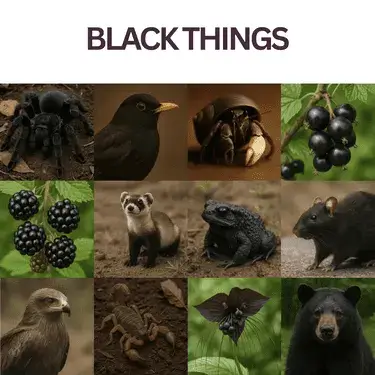
Other Things: Orange, Yellow, Pink, Red, Green, Purple, Blue